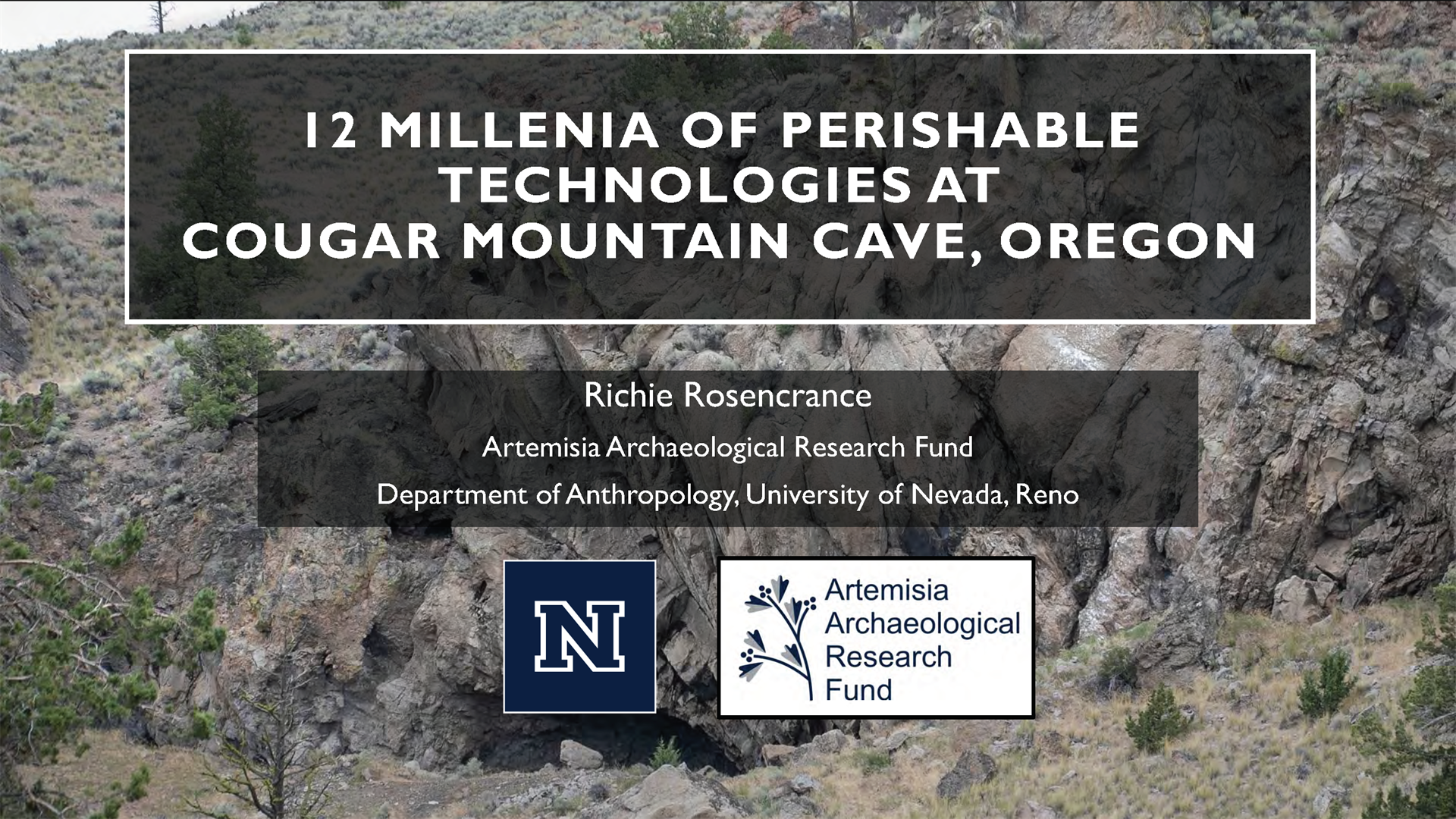Archaeological Research Grants
The Archaeological Society of Central Oregon offers research grants for projects in the field of Archaeology, Anthropology, Ethnology, History, or related areas, with a focus on central Oregon.
2026 Application Deadline is April 15, 2026Download Grant Application Guidelines
2025 ASCO Research Grant Award
Katelyn McDonough, Department of Anthropology and Museum of Natural and Cultural History, University of Oregon

Late Pleistocene/Early Holocene Toolstone Selection and Mobility at the Connley Caves
Conduct geochemical sourcing of obsidian artifacts from the Connley Caves, Oregon. These tools, recovered during the 2023–2024 University of Oregon (UO) Museum of Natural and Cultural History (MNCH) archaeological field schools, are associated with Western Stemmed Tradition (WST) components dating to the late Pleistocene (~13,000 -11,700 cal BP) and Early Holocene (11,700 - 8200 cal BP) in Connley Cave 6. Obsidian is abundant in central Oregon, and has been used by Indigenous peoples for tools, ceremony, and trade for millennia. X-ray fluorescence spectrometry (XRF) is a widely applied, nonintrusive method that allows us to match the elemental signature of obsidian artifacts to geologic obsidian flows and thus determine where the toolstone material originated. Because obsidian is the primary material people used to make stone tools at the Connley Caves, XRF analysis will allow us to test our hypothesis that—if people were highly mobile during the Ice Age—WST stone tools should source to more distant and diverse obsidian flows than tools dating to the Holocene. In addition to addressing this hypothesis, understanding where people obtained their obsidian, how they made tools, and where they carried and ultimately discarded them will provide insights on technology, mobility, and economy (Smith and Harvey 2018).
ASCO’s Grant of $3,000 will fund XRF geochemical analyses on 85 obsidian artifacts from Connley Cave 6.
2024 ASCO Research Grant Award
Miranda Harding, Masters Candidate, Department of Anthropology, University of Utah

Interrogating Variation in Artiodactyl Hunting Across the Pleistocene-Holocene Transition in the Northwestern Great Basin: Evidence from the Connley Caves Faunas
Miranda will seek to radiocarbon date osteological remains (bones) within strata from the deepest deposits of the Connley Caves archaeological site in central Oregon. These findings will contribute to an understanding of human responses to dramatic climate shifts during the terminal Pleistocene like the Younger Dryas cool period and subsequent warming of the Early Holocene. Climatological shifts from the Pleistocene Holocene Transition (PHT) have been implicated in the extinction of 38 genera of megafauna, the opening of the Beringia ice free corridor, and are generally linked to the arrival of humans in North America. The Connley Caves site provides a unique opportunity to assess the lifeways and foraging decisions of these first people in central Oregon.
ASCO’s Grant of $1,872 will fund 8 radiocarbon dates across 4 strata in Connley Cave 5
2023 ASCO Research Grant Awards
Richie Rosencrance, University of Nevada, Reno
Reinvestigation of Cougar Mountain Cave, Lake County, Oregon
Cougar Mountain Cave (CMC), located in the Fort Rock Basin of central Oregon, has one of the largest and most continuous organic artifact records in the region. Richie and his team of researchers from UNR & UofO, are focusing on radiocarbon dating of organic artifacts to investigate the chronology of the site, the raw materials and techniques used in the organic items, the sequence of diagnostic lithics, and more.
ASCO’s Grant of $3,165.17 will fund 13 radiocarbon dates and 11 taxa identifications on wooden artifacts.
Pat O'Grady
On behalf of a generous ASCO member, we were able to present a grant of $3,000 to Pat O’Grady for two studies to enhance our understanding of the paleoenvironement of the Rimrock Draw Rockshelter site.
- Archaeobotanical analysis, by Dr. Margaret Helzer, of charcoal recovered in the oldest deposits will tell us about the vegetation at the earliest period of human use.
- Diatom analysis, by Dr. Barbara Winsborough, will aid in our understanding of the site in relation to the stream channel and associated hydrologic features.
Research Updates
Richie Rosencrance, MA, RPA, University of Nevada, Reno
Update on ASCO Funding for Cougar Mountain Cave Research
Thanks to generous support from the Archaeological Society of Central Oregon’s (ASCO) research grant program we have made significant strides in our ongoing research at Cougar Mountain Cave (35LK55), Oregon. We used funds provided by ASCO to obtain radiocarbon dates and wood taxa identifications on artifacts part of the site’s legacy collection housed at the Favell Museum in Klamath Falls. With ASCO’s support, and support from a variety of other funders, Cougar Mountain Cave is now the third most dated archaeological site in all of the Americas with 211 individual radiocarbon dates. This allows us, for the first time, to understand the timing and tempo of human occupations of the site over the last 12,500 years. Moreover, Cougar Mountain Cave no longer lives in infamy of “what could have been,” as the new chronology allows us and other researchers to compare and contrast the chronology and cultural material of Cougar Mountain Cave to regional archaeological sites such as Paisley Caves and Connley Caves.
Click here to read the entire summary.

Click here to open presentation.

